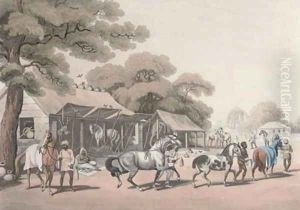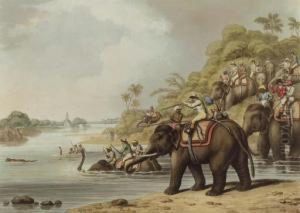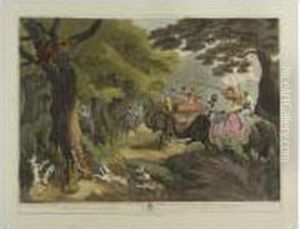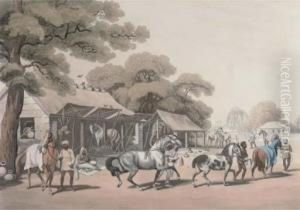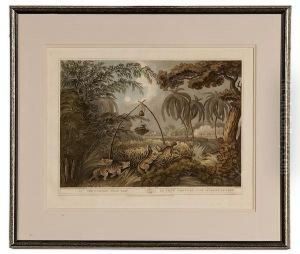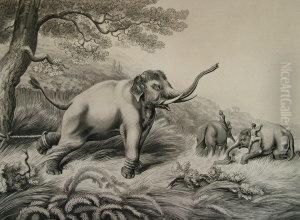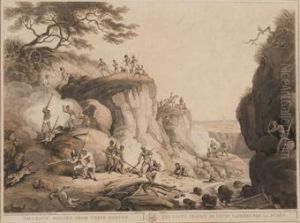Samuel Howitt And Captain Thomas Williamson Paintings
Samuel Howitt was an English artist, born around 1756 or 1757, known primarily for his works related to animals, sports, and rural life, reflecting a keen observation of nature and a profound interest in the outdoors. Coming from a family in Nottinghamshire, Howitt's early life details are somewhat scant, but he is believed to have initially pursued a career outside of the arts. It wasn't until a financial crisis, caused perhaps by an unsuccessful venture or inheritance issues, that Howitt turned to art as a means of livelihood.
Howitt's artistic career took a significant turn when he moved to London. Here, he became closely associated with the vibrant arts scene of the late 18th and early 19th centuries. Unlike many of his contemporaries who sought formal training in institutions like the Royal Academy, Howitt was largely self-taught, carving a niche for himself with his distinctive watercolors and engravings. His works were widely appreciated for their vitality and accuracy in depicting scenes from nature, hunting, and equestrian subjects.
One of Howitt's most notable collaborations was with Captain Thomas Williamson, who served in the East India Company. Williamson, born in the mid-18th century, was an amateur artist and writer with a deep interest in Indian wildlife and hunting practices. Together, Howitt and Williamson produced a series of illustrations for Williamson's books, such as 'Oriental Field Sports' (1807), which became highly popular. This work is particularly significant as it combines Williamson's firsthand knowledge of Indian flora and fauna with Howitt's artistic skill, offering a unique perspective on colonial India's natural world and sporting culture.
Samuel Howitt's legacy is that of a prolific and versatile artist whose work captured the spirit of British sporting life and colonial encounters. He passed away in 1822, leaving behind a rich body of work that continues to be celebrated for its contribution to British art and natural history illustration. Meanwhile, Captain Thomas Williamson's writings and collaborations with Howitt provide valuable insights into early 19th-century British-Indian cultural exchanges and the natural history of the subcontinent.
